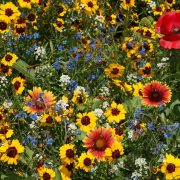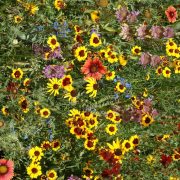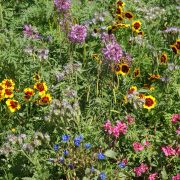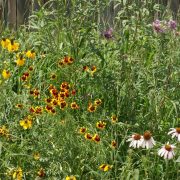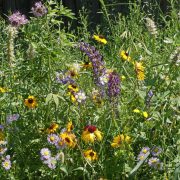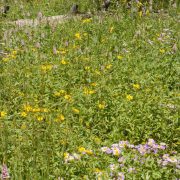Native Bee Habitat
There was a time when native bees and wild honey bees performed all of a farmer’s pollination needs because of the presence of natural areas nearby. These natural areas provided nesting sites, food and protection for the bees. Because of the way agricultural landscapes are developed today, there is often a lack of native bee habitat and forage near farms. Techniques to encourage native bees to live in your area are simple to implement. These can be applied on farms, in commercial landscapes and in home gardens.
Effective Bee Conservation Minimizes Bee Habitat Loss and Enhances Bee Populations
It is easy to engage in native bee conservation to counteract bee habitat loss. You can preserve known nesting and foraging sites on your property, or you can create them. Good native bee habitat must include water, areas for nesting or egg-laying, food and secure over-wintering sites. For bee food, provide pollinator plants that bloom in spring, summer and fall to provide nectar and pollen throughout the growing season. Diverse seed mixes that provide bee friendly flowers in a wide variety of colors, shapes and sizes of flowers will help attract a greater diversity of native bees.
These habitat and forage areas should never be treated with insecticides or other harmful chemicals. If insecticides are utilized in the vicinity of bee habitat, they should be applied when they have the lowest impact possible on local bee populations. This might entail spraying pesticides only when bees are not active.
Where do bees live?
Nesting sites are essential for native bees. Create patches of bare ground in sunny areas for ground dwelling bees. Wood nesting bees can make use of dead pieces of wood, and several groups of bees make nests in the dead, hollow stems of leftover stubble or dead twigs. You can make homes for these twig nesters by wrapping up a bundle of hollow stems from plants such as sumac, bamboo or raspberry and hanging them in your native bee habitat. Bunch grasses provide nesting sites for bumble bees, but there are commercial nesting boxes that are available for this purpose too. Finally, avoid soil disturbance such as excessive digging or rototilling in native bee habitat to avoid killing eggs, larvae and bees nesting underground. Some recommended flower mixes specially formulated with flowers that provide pollen and nectar (bee food) for native bees are shown below.

